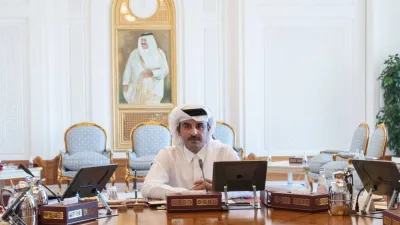Deadly Kenyan protests that scuppered tax hikes and a failed coup amid fading economic prospects in Bolivia this week are violent reminders of the dangers posed by faltering economies and punishing austerity measures. Bolivia’s President and former economy minister Luis Arce fended off the putsch on Wednesday, but faces ongoing US dollar shortages and soaring borrowing costs that pushed the country’s credit rating to “junk.” Kenya’s President William Ruto, who reversed support for a tax-hike measure, now must find another path to make his nation’s debt pile of some $80bn more manageable.
Around the world, low income nations were sucked into economic crisis — and in some cases, debt default — after the 2020 Covid-19 pandemic decimated parts of the global economy.
Now, the crisis is reverberating in Kenya, Bolivia and other middle-income nations bearing the brunt of a surge in inflation and the rapid global interest rate rises that followed the pandemic. Borrowing costs soared and Russia’s war in Ukraine exacerbated a rise in prices of fuel and food. “There are a lot of governments around the world all facing the pain, delayed fiscal pain, from the interest rate hikes that we’ve seen in recent years” said Charlie Robertson, head of macro strategy with FIM Partners, which invests in emerging market debt.
“It’s not a surprise that the country might reach a breaking point.” At least 23 people died in Kenya as protests spiralled from online condemnations of the tax hikes into mass rallies demanding a political overhaul.
“It is not just the taxes,” said Mary Ngigi, a 37-year-old clothing company worker in Kenya, on why she was protesting.
“When you go to the hospitals, there is no medicine. When you go to the schools, there are no infrastructures.” Turmoil is spreading. In Nigeria, workers protesting rising fuel and food costs caused a nationwide power outage, and leaders face rising subsidy costs despite tripling petrol prices last year.
In 2023, a record 54 developing countries, equivalent to 38% of the total, allocated 10% or more of government revenues to interest payments, with nearly half of them in Africa, according to a report from UN Trade and Development agency UNCTAD.
Multilateral banks and political risk firms have warned of a ticking time bomb for some time. While debt relief efforts had centred on the poorest nations with solvency problems, and rightly so according to the World Bank, not enough had been done for lower middle-income countries facing temporary liquidity pressures in the near future.
“Without action, 2024 will see a further rise in debt vulnerability — potentially leading to reversals in development outcomes,” World Bank senior managing director Axel van Trotsenburg warned.
Kenya, like others, borrowed heavily in the mid-2000s, when interest rates were low — and China was splashing cash via its Belt and Road initiative to lend to emerging markets worldwide. Over the past 20 years Kenya amassed some $82bn of debt to build roads, railways and factories. But not all ambitious projects were completed and many Kenyans felt they had not benefited, while a slew of corruption scandals spurred allegations that elites enriched themselves.
“There is no cut on corruption,” Boniface Mwangi, a prominent social justice activist in Kenya told Reuters. “We have no problem paying debt, but...what did you do with that money that you borrowed?” Ruto has said he is waging a war on corruption and has called for those responsible for graft to be prosecuted.
Kenya managed to avoid default by issuing more debt earlier this year — but at a punishing interest rate above 10%. After this week’s protest, the country’s bond prices slid again.
To keep crucial IMF cash coming, Ruto must find a way to balance the books.
Opinion
Kenya clashes and Bolivia’s failed coup show perils of economic hardship
“When you go to the hospitals, there is no medicine. When you go to the schools, there are no infrastructures”



